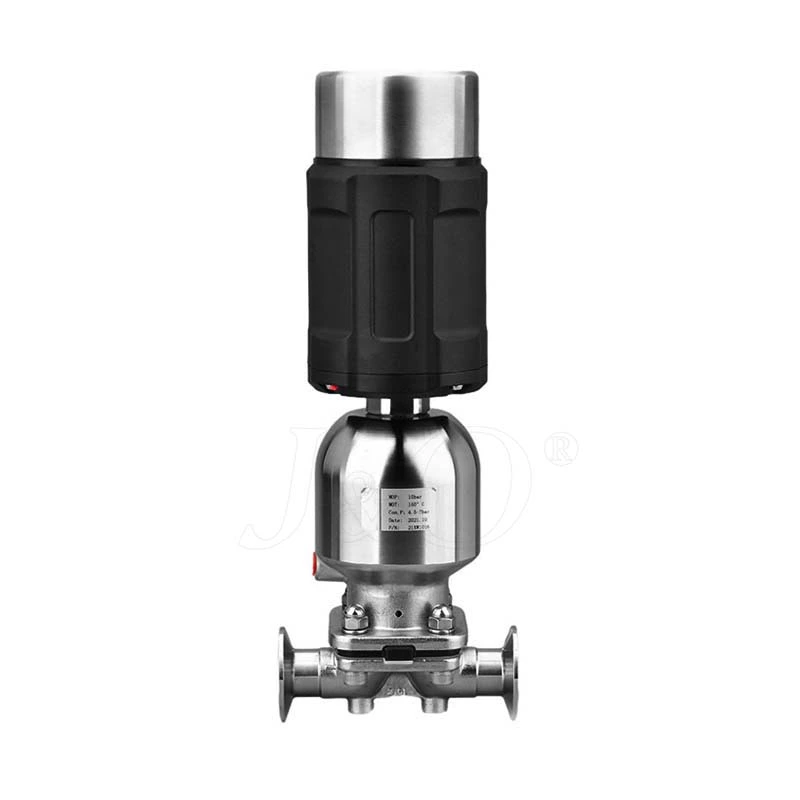Why Is The Diaphragm Valve A Special Type Of Shut-off Valve?
The structure of Sanitary Diaphragm Valve is very different from that of ordinary valves. It is a new type of valve and a special type of shut-off valve. Its opening and closing parts are a diaphragm made of soft material, which separates the inner cavity of the valve body from the inner cavity of the valve cover and the driving components. It is now widely used in various fields. Commonly used diaphragm valves include rubber-lined diaphragm valves, fluorine-lined diaphragm valves, non-fabricated diaphragm valves, and plastic diaphragm valves.
The diaphragm valve uses a valve body and a corrosion-resistant diaphragm made of corrosion-resistant materials to replace the valve core assembly, and uses the movement of the diaphragm to play a regulating role. The valve body material of the diaphragm valve is cast iron, cast steel, or forged stainless steel, and is lined with various corrosion-resistant or wear-resistant materials, diaphragm materials rubber and polytetrafluoroethylene. The fabric diaphragm has strong corrosion resistance and is suitable for the regulation of strong corrosive media such as strong acids and alkalis.
The diaphragm valve has a simple structure, small fluid resistance, and greater flow capacity than other types of valves of the same standard; there is no leakage, and it can be used for the regulation of high viscosity and suspended particle media. The diaphragm isolates the medium from the upper cavity of the valve stem, so the medium will not leak out without packing. However, due to the limitations of the diaphragm and the surface material, the pressure resistance and temperature resistance are poor, and it is usually only suitable for pressures below 1.6MPa and 150℃.
The flow characteristics of the diaphragm valve are close to the quick opening characteristics. It is approximately linear before 60% of the stroke, and the flow changes little after 60%. Pneumatic diaphragm valves can also be equipped with feedback signals, limiters and positioners to meet the needs of automatic control, program control or flow regulation. The response signal of the pneumatic diaphragm valve adopts contactless sensing technology. This product uses a diaphragm push cylinder instead of a piston cylinder, eliminating the disadvantage that the piston ring is easily damaged, causing leakage and making it impossible to push the valve to open and close. When the air source fails, the hand wheel can still be operated to open and close the valve.
Features of diaphragm valve:
(1) Small fluid resistance. (2) It can be used for media containing hard suspended matter; because the medium only contacts the valve body and the diaphragm, there is no need for a stuffing box, there is no problem of stuffing box leakage, and there is no corrosion to the valve stem.
(3) It is suitable for corrosive, viscous, and slurry media.
(4) It cannot be used in high pressure occasions.
Installation and maintenance of diaphragm valves:
① Before installing the diaphragm valve, carefully check whether the operating conditions of the pipeline are consistent with the use range specified by this valve, and clean the inner cavity to prevent dirt from blocking or damaging the sealing parts.
② Do not apply grease or oil to the rubber fabric layer and the surface of the rubber diaphragm to prevent rubber swelling and affect the service life of the diaphragm valve.
③ The handwheel or transmission mechanism is not allowed to be used for lifting, and it is forbidden to bump.
④ When manually operating the diaphragm valve, do not use an auxiliary lever to prevent excessive torque from damaging the drive components or sealing parts.
⑤The diaphragm valves should be stored in a dry and ventilated room. Stacking is prohibited. The two channels of the stored diaphragm valves must be sealed, and the opening and closing parts should be in a slightly open state.
